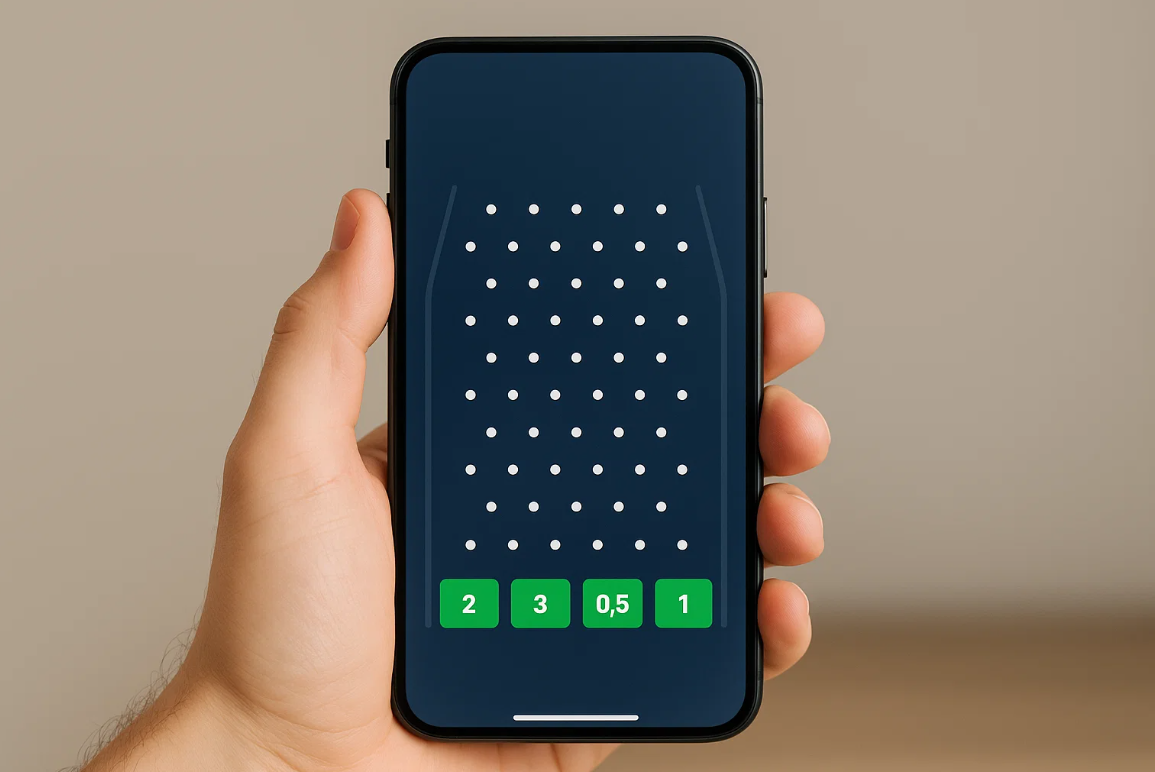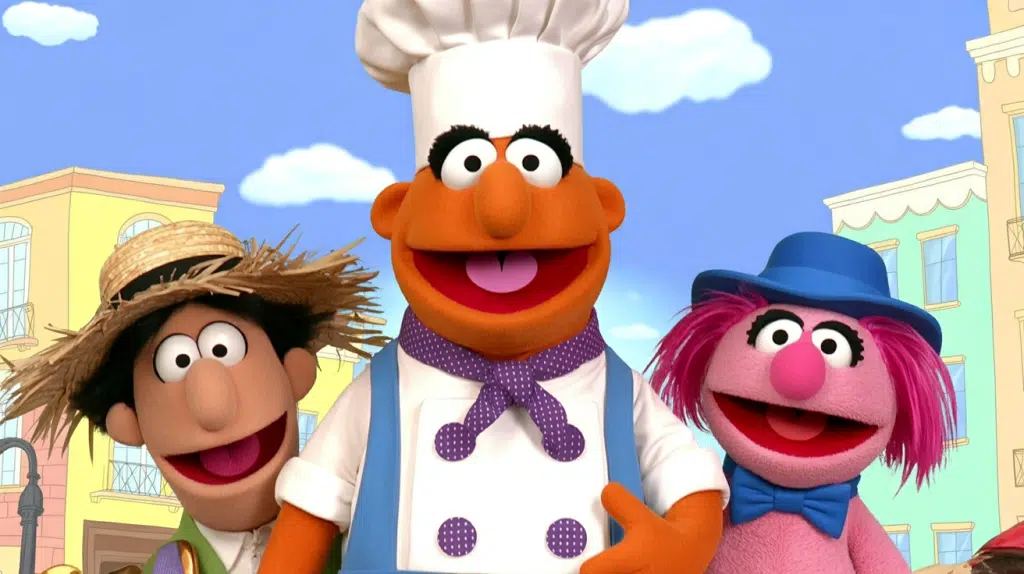At lunchtime I often fire up a small browser window and watch the ball bounce down the pegs. Somewhere in the middle of the drop I remember that plinko game sits only one tab away, ready to accept a stake the moment I feel brave. The core idea is lightning-clear: pick a slot at the top, click, and let gravity decide whether today’s pocket money grows or shrinks. I like that I can finish a round in less time than it takes to stir my coffee. No reels, no pay-lines, no card hands; just a direct descent that feels a bit like rolling dice you can actually see. Casino guides often overflow with loud slogans; I skip such fluff and talk straight. So the first thing I share is how that speed and visibility drew me in from the opening session.
How I Got Hooked on the Plinko Concept
I first noticed the game inside a generic casino lobby. Bright colours, tiny sound pings, nothing else. I made a small deposit, less than the cost of a sandwich, and played five shots. Two fell in low-value pockets, one doubled the stake, and the last two balanced each other out. I left the page with almost the same balance, yet my pulse was faster than after most slot sessions. That was the moment I realised that a single moving ball can deliver pure suspense with zero rules to memorise.
Quick Habits that Kept Me Comfortable
Right after that first taste I set up a simple routine to keep the pastime light. I log in, check the balance, decide on a ceiling for the day, and promise myself a hard stop the minute that ceiling appears on the screen. When the urge to keep clicking grows, I remind myself that the ball owes me nothing and that tomorrow is another chance. This short internal script has saved me from many rushed top-ups, and it lets every bounce stay fun instead of tense.
First Steps: Trying Demo Rounds Before Real Stakes
Before risking notes from my wallet I spent a long afternoon on demo modes. Many sites give endless virtual credits, and no registration is required. The layout matches the paid version, including stake picker and multiplier values, so the only difference is the missing withdrawal button. I played in bursts of twenty balls, wrote down the pocket outcomes, and noticed that streaks of lows can cluster. That observation convinced me that losing runs happen without foul play, a point that later helped me sit through them in paid mode.
Why Demo Play Saved Me Money
Demo play saved more than coins; it saved nerves. By learning the rhythm, I discovered a natural breathing cycle: watch the drop, exhale on impact, click again. I found that betting bigger every spin too soon drains the fun. In test mode I had the freedom to alter stake sizes in quick succession, see what felt comfy, and decide on a sweet spot I could keep for ten rounds at a time.
- Virtual coins help me study odds at zero cost.
- Every shot lands in under three seconds, so I can track many samples fast.
- No signup means I test on public computers without leaving traces.
Once the virtual chips ran out I reloaded the page and started again, just to see whether the multipliers shifted. They did not. That stable pattern showed me that demo and cash versions share the same maths, a good sign for fairness.
Plinko Strategy Is a Mindset, Not a Formula
I read forum posts where players try to trace a perfect entry point on the grid. Some draw imaginary funnels, some count pegs, some pray to probability gods. After a month of testing I came to a calmer view: the house sets fixed multipliers, gravity flips the coin, and all I can control is stake size and attitude. When I wake up restless I stay away, since haste clouds judgement. On days I feel steady I play shorter bursts, lock small profits, then step back to see the bigger picture.
My Personal Safeguards Before Each Session
I open the balance page and note the starting figure in a notebook. Then I adjust audio so the click of the drop is loud enough to feel real. I never auto-drop; manual clicks slow the pace and give me time to think. I set a phone timer for thirty minutes to force breaks. These little rituals act as rails that keep me honest with myself.
- Daily loss cap: a fixed percentage of my wallet.
- Profit pocket: when winnings reach double the stake, I move half to a separate wallet.
- Break reminder: every ten minutes I stand up and stretch before the next click.
Those rules sound rigid yet they leave space for fun, since wins feel like a bonus rather than a recovery plan.
When I scan new sites I keep four simple checkpoints in mind. The table below shows them at a glance.
|
Check |
What I look for |
Why it matters |
|---|---|---|
|
Licence |
Visible regulator seal |
Holds deposits in secure accounts |
|
Payment speed |
Withdrawals under 15 minutes |
Keeps balance fluid |
|
Mobile fit |
Board fits small screen |
Lets me play during a commute |
|
Multiplier range |
Clear min and max values |
Helps plan stake ladder |
I jot these notes on a sticky pad near the keyboard. As soon as a site fails a single item I skip registration, no questions asked.
Beyond Solo Drops: Tournaments and Shared Boards
A month after my first cash round I found a weekend leaderboard that ranked players by highest single multiplier in fifty shots. The thrill of seeing my nickname climb from 76th to 12th kept me at the screen longer than usual, though my stake size stayed modest. Chat messages popped up every minute, with emojis cheering each hit. That social hum made the screen feel like a funfair stall rather than a private gamble.

Perks that Give Events Extra Spice
Event organisers splash extra bonuses such as reload codes, free drops, or gadget raffles. The best part is that registration often costs nothing; you just play normal rounds inside the window. That removes pressure to overspend since regular play still counts. I once grabbed a hoodie for third place in a midweek sprint, and it felt good to win a physical prize from a digital board.
- Daily leaderboards: rank resets at midnight, so a fresh chance each day.
- Streak rewards: hit five multipliers above x5 in a row and receive bonus credit.
- Community chat: share replay links to celebrate unusual bounces.
The moment I start an event I add the plinko app shortcut to my home screen, since the layout runs smoothly on a thumb-sized display. Quick access helps when a lunch break offers only a few free minutes, and every entry counts toward the ladder.
Staying in Control and Enjoying Every Bounce
Risk management sounds big, yet for this little game it comes down to letting passes end on my terms. I build a habit of cashing out part of the balance after any spike in winnings; that step may leave awkward decimals behind, and that’s fine. The feeling of a lighter wallet discourages reckless follow-ups. Family use the same laptop, so I keep session length short to avoid staring at the screen too long.
Signs I Should Pause and Reset
When my clicks speed up and I barely watch the ball hit the bottom row, I know fatigue has set in. Another sign is raising the stake after a miss to chase the last drop. At that point I shift focus: a glass of water, a short walk, or simply closing the tab. Breaks keep entertainment fresh and stop me from treating statistics like personal destiny.
Each peg on the plinko board is a tiny coin-flip, independent of hope or fear. My wallet stays happier the days I treat the ball as a momentary thrill, not a plan for income. That mindset turns even small multipliers into bright spots and lets misses fade fast. Next time your finger hovers over the stake buttons, pick a number you would tip a street musician, fire one deliberate drop, and feel the bounce for what it is. If the pocket lights up, smile, pocket part of the gain, and step back. Ready? Open a trusted board, set a cap, and let one ball decide your mood—play today and share where it lands!











